Indoor Plants: How Quickly to Rejuvenate a Dying Plant back to Health, like Pro [Plants][Gardening]
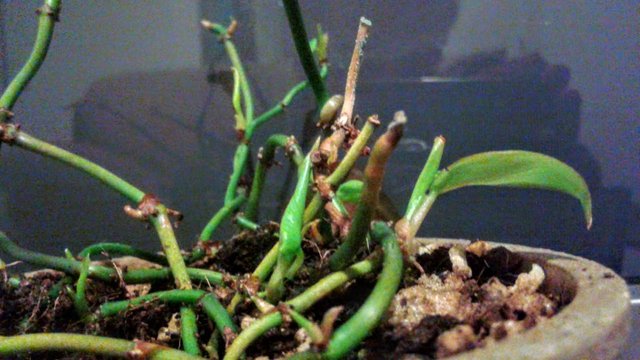
Got an indoor plant that seems to be on its last leg? Has your plant taken an unexpected sudden plunge from healthy to sickly? Think you've got a brown thumb?
Don't give up!
I may have a solution for you!
This magical cure that I, @creativetruth will demonstrate here for you, can be used easily on any small indoor plant, and probably will cost you nothing since it uses materials most everyone already has available at home.
If you are impatient for the answer, scroll to the next big title, otherwise read on...
For those who have been following me for a while, they may know that I also grow bonsai trees outside, and that I am a super fan of pumice rock as an ideal growing medium. No, pumice is not the solution to reviving the indoor plants, but it does bring us a clue to find the answer.
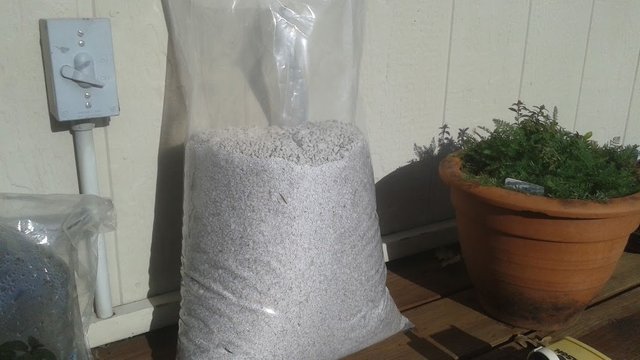
One morning, I walked outside to check on my garden and bonsai trees, and I had to take a closer look at my sack of pumice, because I could not believe my eyes...
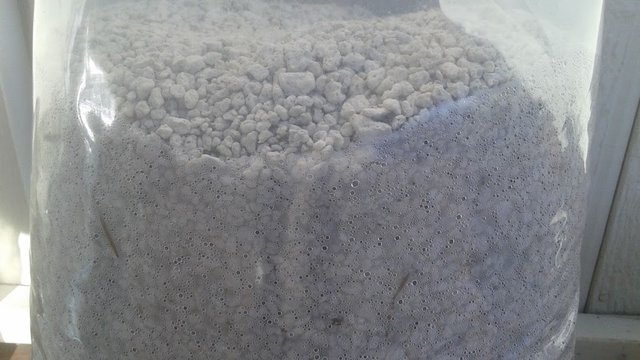
Even though the air was completely dry, and nearly freezing cold, I noticed the entire bag was dotted with droplets of moisture.
How the heck am I going to get the water out of this bag!
Yes, that was my first thought. Mold, fungus, bugs, and bacteria is always a concern where I live. Any moisture inside the bag is likely to contaminate the clean pumice I just bought. Probably the only way I'll be able to dry out this bag is to bring it inside and dump all the stones out. No thanks! I'll just wait for a warm sunny day, even if it takes a few months.
On the other hand, I think nature has taught me another valuable lesson I can put to use....
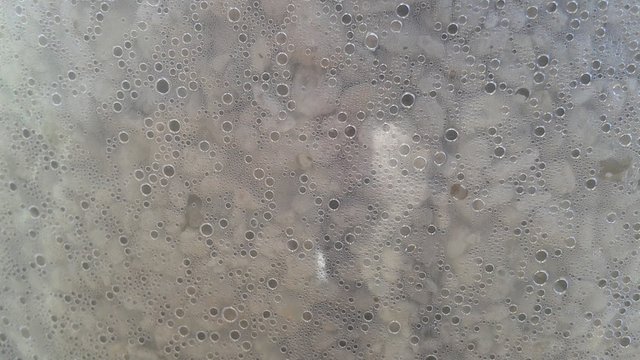
Originally, this bag full of stones was completely dry. It has been under the eaves of the house, so I know for a fact that the rain did not get into the bag. Somehow, in the warmest part of a cold day, condensation causes the vapor in the air to become attracted to the rocks, and the plastic walls of the bag trap the water from escaping.
Water vapor also acts as a heat conductor (greenhouse effect, clouds). Heat, humidity, and water, all floating in the air. This is ideal for practically all living plants and trees I realized. Is there a plant on earth that hates having water vapor constantly swirling around it?
The Plastic Bag Method
If a dry bag this size can capture that much humidity outside on a frozen cold day, imagine what it might do indoors.
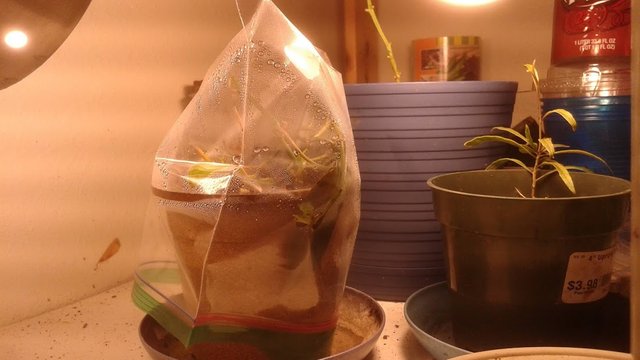
Directions: Cover the weakened plant fully with a clear plastic bag. Cover as much of the plant, soil, and pot as possible, and allow for air to enter freely from the base.
A ziplock bag works well. The zipper side will stretch to fit the width of the pot.
Alternatively, try using a semi-transparent plastic grocery bag. Try not to use one with any big holes in the bottom. Fold the loose ends under the pot, so it loosely covers the pot. The bag can be tinted any color, as long as the bag is transparent enough to let some light through. Clear or white is best.
Soil should remain moist, but do not allow the plant pot to sit in a water puddle.
Check weekly for signs of mold, algae, fungus gnats, or mildew powder under the plastic. If so, remove the plastic bag immediately. Allow the plant and soil to absorb dry oxygen for a day naturally, and move the plant closer to a bright light bulb. Oxygen and bright light will help eradicate diseases and stop them from spreading.
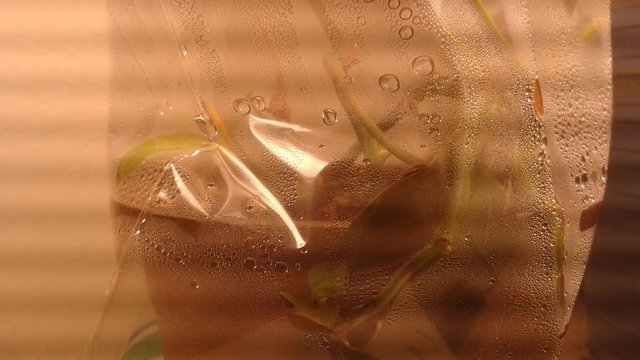
Three weeks ago, I thought this philodendron vine looked like it was starting to die. All the leaves had wilted off, except for one that was barely clinging on. Many of the vines shriveled up and looked dry and brown. I had to trim off many of the dead vine ends. Even though it had several buds on the vine ends, they stopped opening months ago, and they looked brown and calloused.
Now after placing the plant under a plastic bag, and using a spot lamp to give it some extra light every day, new leaves have emerged. Even the large leaf that I thought was going to fall off has been restored to full health. Nearly every vine on the plant is showing signs of new green buds forming along all the nodes. Instead of brown and calloused vines, they look like a tender, healthy, fresh green color again.
Why Does This Work?
Ever since the air started getting colder outside, we've been using the indoor heater that provides hot dry air into all of the rooms of the house. Within a few weeks using the indoor heating system, I've noticed many of my indoor plants have been showing signs of weakness.
Note: This is why starting vegetable seeds indoors in the winter tends to fail, unless you use a humidity dome to protect them. The stems grow upward, wilt, and then dry out!
Leaves changing color, drying and falling off. Dried/dead branches. Green becoming dark brown. This was not a coincidence.
Even though indoor temperatures remain consistent, the sudden loss of moisture in the air, and the blowing of dry heat through the tender foliage can wreck terrible horrors on indoor plants. Indoor plants might suddenly look worse than the vegetable garden in the freezing temperatures outside.
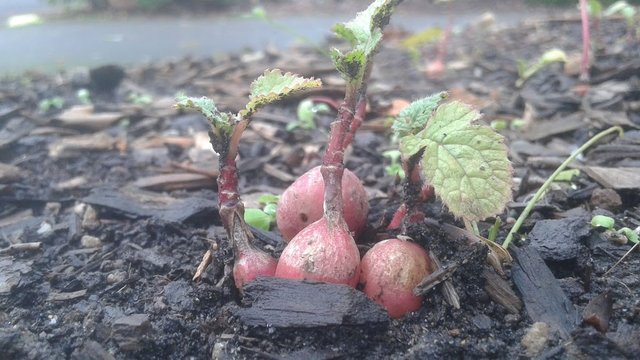
I'm serious!
These radishes outside right now in my garden are actually getting more warmth, moisture, and sunlight than my indoor plants. Their roots are covered in a blanket of soil, and the top soil is covered with wood chips that absorb moisture like a sponge, and holds it in for days.
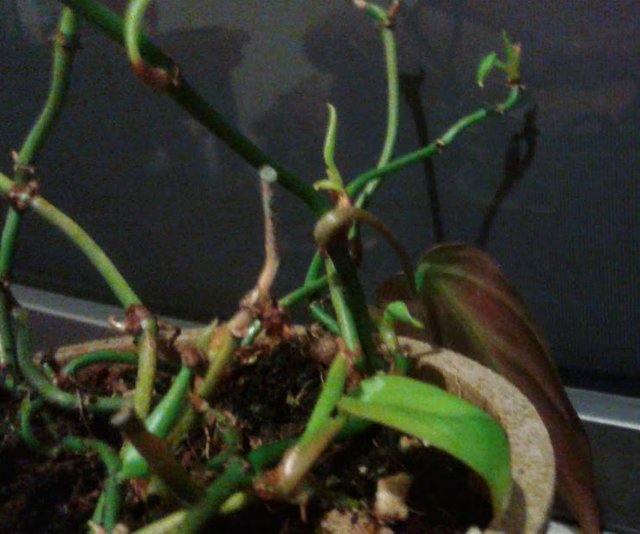
No amount of misting my indoor plants will help if the heater is sucking out all the moisture from the rooms every minute of the day.
Now that my vine is showing signs of rejuvenation, I've taken the bag off, and returned it to its original location where it will only receive normal light from the window. I'll be checking on it to see if it remains healthy or if it decreases in health again, and then I'll use the plastic bag method again if necessary.
In the meantime, I'm working on rescuing some of my other indoor plants that have also been showing signs of failing health. My lime tree has lost all of its leaves, which is not a good sign. So hopefully a strong dose of tropical humidity will restore it back to paradise.
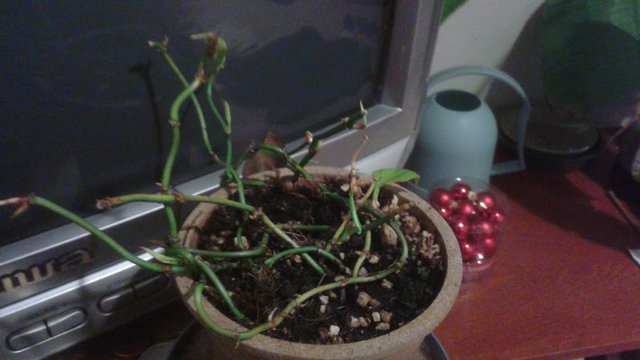
Have you ever tried doing this before, or something similar? Let me know in the comments below. Happy growing!
Bonsai!

| Account Value: $751.51 | Votes Given / Received: 4,388 / 10,612 |
| SP: 1,861.559 | Posts / Comments: 257 / 2,007 |
| STEEM / SBD: 0.324 / $2.278 | Delegated In / Out: 187 / 180 |
| REP: 63.037 | Followers: 1,441 / 157 following |
| Curation Rewards: 2.167 SP | Author Rewards SP / S / SBD: 1.355 / 0.507 / 0.001 |

| STEEM In / Ex = 0.40241 / 0.29497 | BTC / ETH/ LTC = 3869 / 103.4/ 30.3 |
| SBD = 0.74285 | Gold/Silver oz. = 1,231.90 / 14.43 |
I use cache pots under all of my 75+ house plants or humidity trays. We have 2 wood stoves and nothing is worse for making dry air.
Arrowhead with deep cache pot. I fill this 1/2 full twice a month, as you can see. Plant is 15 or 20 years old..
Two bay laurels and 2 African violet starts on humidity trays.
I've had good luck with these simple methods for many types of plants. If they can't survive this type of care, then they don't make it here.
Good idea. Does it keep the foliage humid enough?
I'm not sure I can see the what you are talking about in the top photo. It looks very healthy though. Looks like glass beads in the other photo, filled with water in the lower tray right?
The bottom, white container on the first photo, is a reused 1 gallon ice cream bucket. They work great as cache pots for hanging plants in big pots. When you water the plant from the top, the cache catches all the water. It slowly evaporates through the soil and plant. You can see the water line about 1/2 way up.
The 2 bay laurels are on glass beads that I got from BuyNothing. The African violets are on small stones I collected in the gravel in the driveway. I use anything that will allow evaporation and elevate the plant pot.
Nice. Thanks for the explanation.
Congratulations @creativetruth! You have completed the following achievement on the Steem blockchain and have been rewarded with new badge(s) :
Click here to view your Board of Honor
If you no longer want to receive notifications, reply to this comment with the word
STOPTo support your work, I also upvoted your post!
Do not miss the last post from @steemitboard:
Wow cool. Like a spa treatment ha ha
Congratulations! Your post has been selected as a daily Steemit truffle! It is listed on rank 3 of all contributions awarded today. You can find the TOP DAILY TRUFFLE PICKS HERE.
I upvoted your contribution because to my mind your post is at least 3 SBD worth and should receive 136 votes. It's now up to the lovely Steemit community to make this come true.
I am
TrufflePig, an Artificial Intelligence Bot that helps minnows and content curators using Machine Learning. If you are curious how I select content, you can find an explanation here!Have a nice day and sincerely yours,

TrufflePig@creativetruth You have received a 100% upvote from @intro.bot because this post did not use any bidbots and you have not used bidbots in the last 30 days!
Upvoting this comment will help keep this service running.
Thank you for the kindness and responsible job you do.
It is also believed that stone dust makes some mushroom grow if conditions are right @creativetruth
Interesting. I had never heard about that before. Spores are so small and they are practically everywhere in the air we breath.